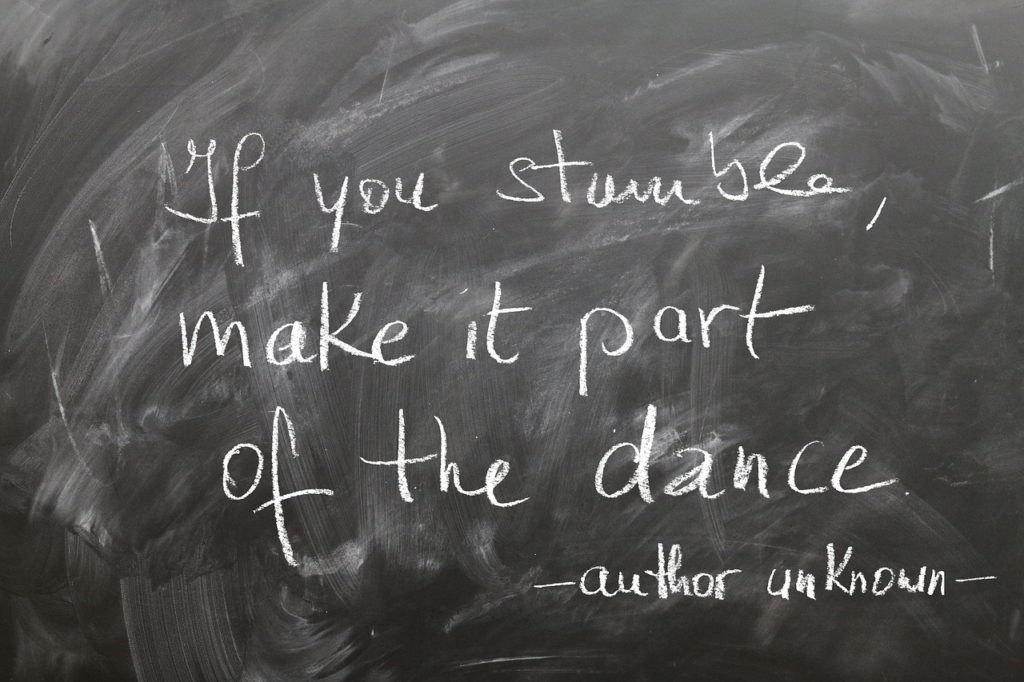In last week’s musings, I shared ideas from the great thinker and champion of education, Sir Ken Robinson. I hope you took the opportunity to watch his TED Talk on creativity in schools. He told a funny story about a little fellow who made a mistake in his performance as a “Wiseman,” and he commented that “children are not afraid to be wrong.” It isn’t until children get a bit older that they become more aware of the scrutiny of the public eye. This awareness is the result of their experiences with negative feedback to their missteps and those of their peers. Unfortunately, they often learn to feel shame when they make mistakes. In a presentation entitled “Daring Classrooms” given to an audience of educators at the South by Southwest (SXSW) conference in 2017, Brené Brown, Ph.D., LMSW, and research professor of social work. indicated that “shame in lower-school-aged children is neurobiologically experienced as trauma.” She also suggests that trauma destroys vulnerability, and “learning is inherently vulnerable.” In her book “Daring Greatly,” Brené describes vulnerability as “uncertainty, risk, and emotional exposure.”
The roles that shame and vulnerability play in education cannot be underestimated. Brené shared a staggering statistic from her research that “85% of men and women can remember an incident that happened in a classroom that forever changed the way they thought of themselves as learners.” She further emphasized the impact that educators can have on their students by sharing another statistic that “more than 90% of men and women can name a teacher, coach, or administrator who made them believe in themselves when no one else did.” We must not take lightly the role that educators play in the lives of students and be careful to treat them with respect and empathy. It is imperative that we recognize the often misinterpreted expressions of shame that students exhibit. Brené uses Shame Shields to describe the ways that students often attempt to disconnect when they are feeling shame. In her presentation at SXSW 2017 she touched on three of these:
- moving away – secret keeping, hiding, isolation
- moving toward – people pleasing
- moving against – fighting back with shame and anger
Unfortunately, these expressions of shame are too often misunderstood and labeled as lazy, disengaged, unmotivated, needy, annoying, difficult, or disruptive. I think about the numerous comments and conversations to which I was a witness in faculty lounges, hallways, and even departmental meetings where students were discussed in derogatory terms and stories were proudly recounted of how students were shamed for their mistakes and behaviors. As a support teacher, I was often a witness to the public humiliation of students by educators in front of their peers. This lack of respect shown by the teacher inevitably gave the right-of-way to the other students to hop on the bandwagon. The shame storm is powerful if untamed. Brené pointed to a number of other behaviors that are highly correlated with feelings of shame in children including addiction, depression, bullying, violence, eating disorders, and suicide. Addressing these behaviors is at the top of educational meeting agendas across the country, and I believe that educators must be aware of and skilled in addressing shame as a stumbling block to vulnerability if we expect to change these outcomes. Vulnerability is not a weakness but a necessary characteristic that enables learning, creativity, innovation, and the ability to accept and champion change. All of these actions require us to accept uncertainty, risk, and emotional exposure; to be vulnerable. Sir Ken Robinson advised that “If you’re not prepared to be wrong, you’ll never come up with anything original.” In my mind, there is no better place to learn how to be vulnerable than in the safety of a supportive classroom; learning and creativity will flourish.

